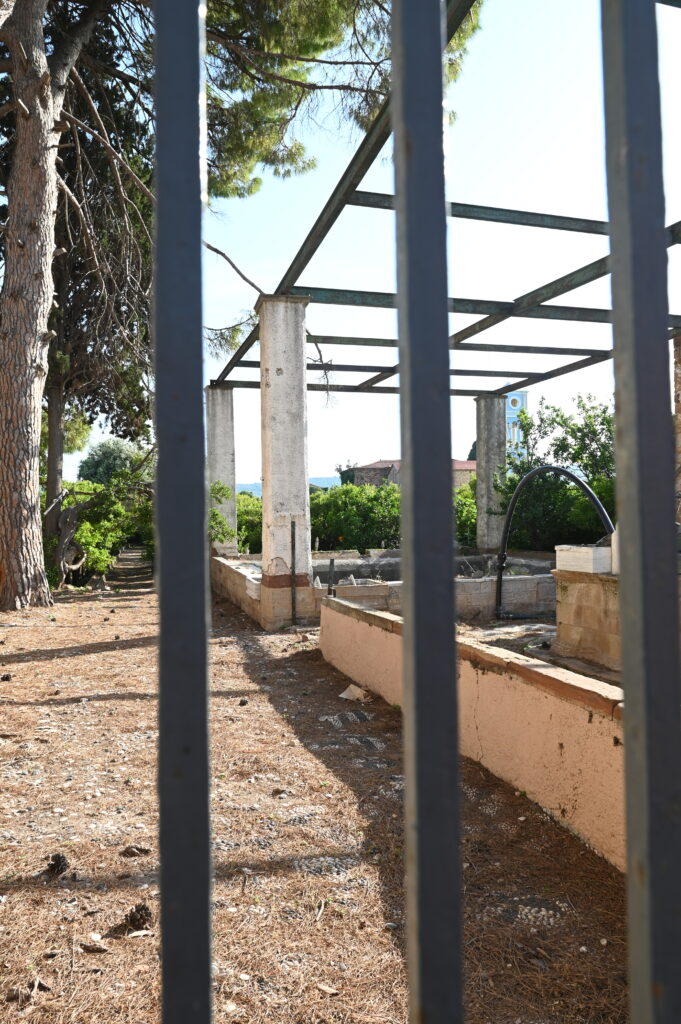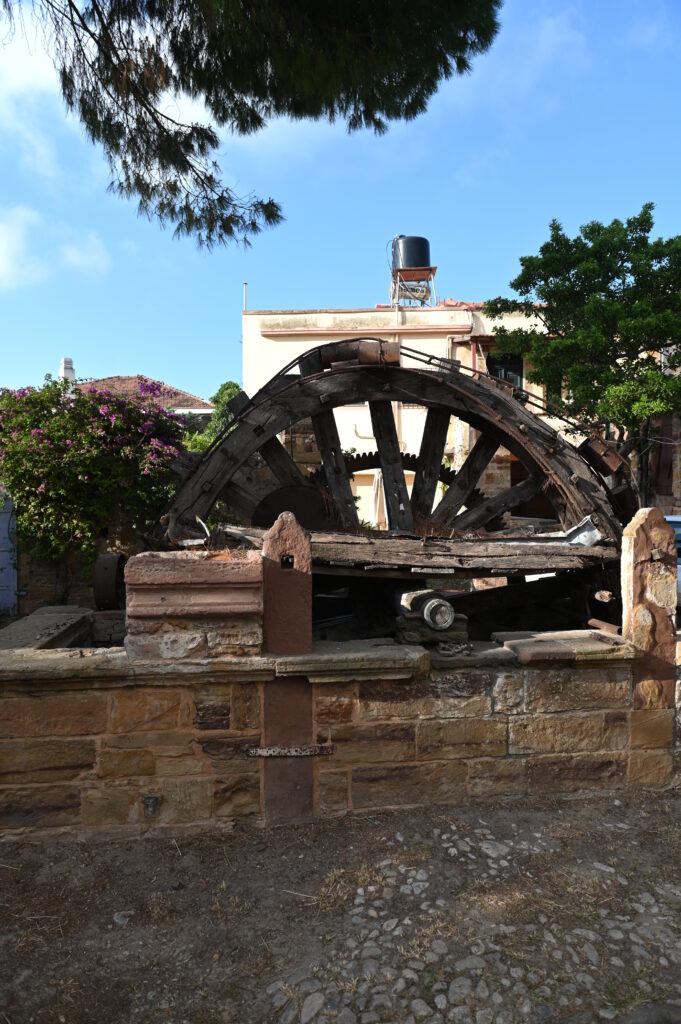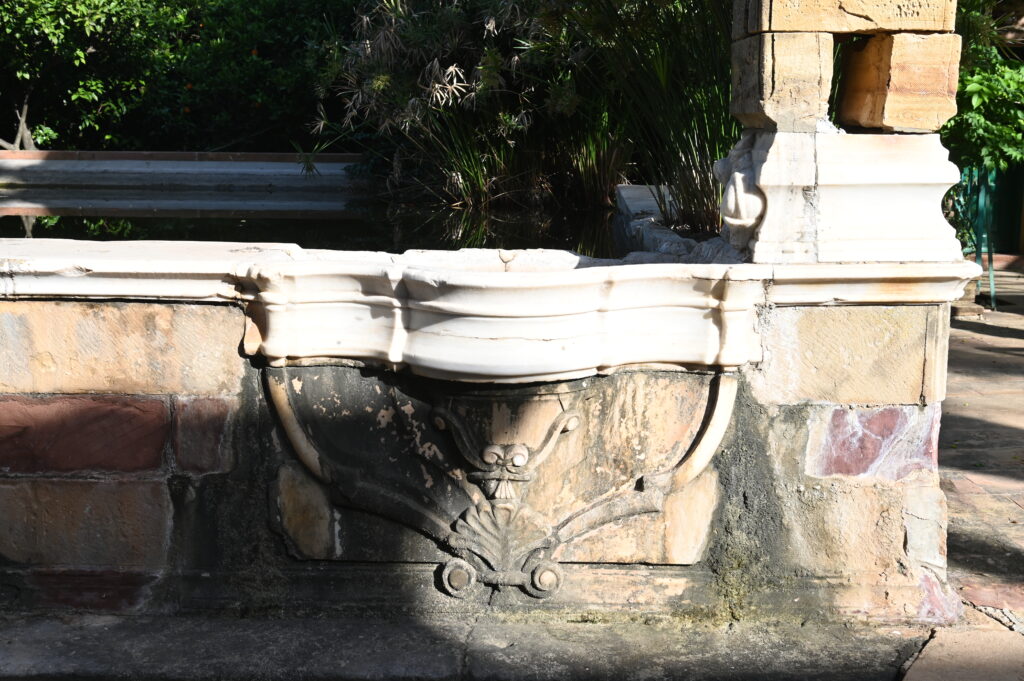WATER RESOURCES

Water tanks
The WELL
In each estate and in each yard there is at least one well with a depth of 20 to 48 m. The well with the manganese is located in a prominent position and in a specially designed circular space. The well with the manganese is located in a prominent position and in a specially designed circular space. Water comes either from a vein or from drains.
The opening of the well was round, with a diameter of about four meters, and very deep. The diameter of the well was as large as that of the pulley. It was round to minimise the pressure on the stonework and to avoid the inside walls from crumbling. Every stone worked as a wedge and held together the stones around it. On the ground, the well came up to 1.20 – 1,50 m above the ground, and around it a stone rectangular frame, called a chest was constructed.

Pulley
The pulleyof the well is one of the most impressive elements of the Kambos fields. It is a system to pump water from the well. In the past, the farmers used pack animals to turn it around.
The pulley was a wooden wheel, made of almond wood, terebinth, mulberry or oakwood, (though in later years it was made of iron). Its diameter was about three metres, and it rotated vertically to the ground, around an axis that was fixed in the middle of the rectangular frame or chest.



A series of containers hanging from the wheel and stuck on a belt were pulling the water from inside the well and pouring it through an open stone duct in the nearby cistern. In older times these containers were ceramic but were progressively replaced with metal ones. The gardener had to increase or decrease the length of the chain attached to the containers, so that he could pull water from different depths, according to the season, the needs of the garden and the quality and quantity of the water in the well. Around the well was an earth corridor where the animal could move around. The rest of the place was paved with pebbles. The containers were originally made of clay but were replaced by metal ones. The art of water management required the perivolar to fluctuate the length of the container chain, in order to pump water from different depths in each season, depending on the season, the need of the orchard for water and the quality and quantity of water remaining. Around the well there was a manganogyros, earthen corridor with a stone cutter to turn the animal, while the rest of the area was paved with pebbles or chipped slabs.
This system of pumping water was introduced by the inhabitants of Chios from Egypt. As technological developments advanced, machines started being used for the turning of the pulley and gradually the whole system was replaced by mechanical pumps. With the technological development for turning the manganese, machines were used and gradually the manganese was replaced by mechanical pumps.
CISTERN
The cistern was a reservoir that received the water that was pumped from the pulley. It was a rectangular stonework, coated on the inside with a local mortar called astrakia. It was big enough to cover the needs of the garden. The stonework was covered from the outside with chiselled stone from the nearby Thymiana village. In wealthier mansions, this covering was made of colourful marble. The cistern had a rectangular parallelepiped shape, made of strong stonework, internally coated with “spark” and a capacity commensurate with the needs of the estate. The exterior of the stone structure was covered with chiseled Thymianouski stone, while in the rich mansions this investment was made with marble in various colors.


There was a marble or stone pillarat each corner of the cistern, holding up the arbour covered with grapevines. Also, a column stood in the middle of the cistern, with a statue of a sphinx, an eagle, a lion, or a similar creature.
A small sitting area called a belvedere was next to the cistern, on ground higher than the rest of the courtyard, covered with leafy green plants.
Water resources
Water Paths
This was a system of channelling rainwaterto the garden for watering it. Any excess was then channelled from one field to another all the way to the sea. These water paths had special blocks located at regular intervals, to control the flow of the water and protect the orchards from flooding. The water passages had special barriers (barricades) in order to regulate the flow of water and not to create floods in the fenced orchards.
However, most of these channels were destroyed to make way for roads, which covered them. Only in a few places, one can see the small arches, a characteristic of those channels. In only a few places can one see the toxils, a characteristic part of these channels.

Watering
The water run from the cistern into a network of stone channels, that piped it to different areas of the field. This system was operated by a specialist called potistis. Every 12 to 15 metres, the channels had a gap, where they would position small wooden planks to stop the flow and channel it to the specific areas they wanted to water.
Once the water left the channel, it was guided towards large trenches opened in the ground between the citrus trees. Once the water left the channel, it was guided towards large trenches opened in the ground between the citrus trees. The number of these trenches depended on the age and the distance between the citrus trees. Usually, the fields in Kambos had old trees, and this, combined with the long dry summer months, led to the digging of many trenches, for better watering. Today, however, in many fields, watering is done with hoses. The number of furrows depends on the age of the trees and their planting distance. The Kambouski estates have old trees and in combination with the dry summer months, it is chosen to dig several furrows, so that the trees are watered satisfactorily. Today in several estates the irrigation is done with hoses.
